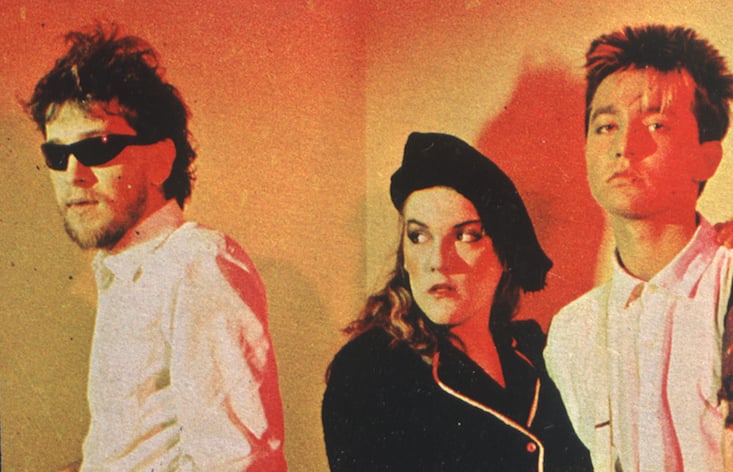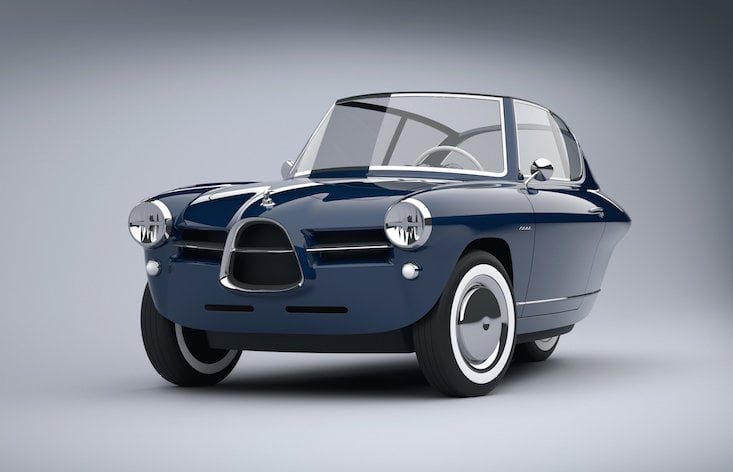Remember the Yugo? We took the tiny 80s car on a multi-country odyssey from Serbia to New York and beyond
After rolling off production lines in the former Yugoslavia — and modern day — for more than a quarter of a century, the iconic Yugo is a car both loved by nostalgics and derided by car enthusiasts. One group of artists decided to retrace its path to from Eastern Europe to the United States in one epic road trip.
Few cars are as loved — or as hated — quite as much as the humble Yugo. First rolling off Yugoslavian production lines in November 1980, the Yugo managed what few politicians could: uniting the United States, western Europe, and the Eastern Bloc in the guise of a low-cost three-door hatchback. The Yugo was exported to more than 30 countries either side of the Iron Curtain. It was compact, easy to repair at home, and, most importantly, cheap. With a price tag that undercut its rivals — with luxuries such as rear wipers and fabric upholstery all included — the car won hearts in Belgrade, Berlin, and Boston.
The Yugo sharing the road with modernday vehicles. Image: Y? Project
The Yugo proved a perfect starting point for Slovenian art project Y? to examine social history around the world. Supported with funds from Creative Europe and the Slovenian Ministry of Culture, the team — made up of visual artists Neža Knez and Danilo Milovanović, video artist Toni Poljanec and handyman Luka Erdani — drove the car from Kragujevac, Serbia, where the car was made, to Pennsylvania, talking to former factory employees, artists, and Yugo enthusiasts along the way. Their marathon journey inspired a series of art installations and an experimental documentary film, due to be released in the autumn of 2020.
“Yugos were a common sight in the streets of ex-Yugoslav countries,” says Danilo Milovanovic. “We were familiar with them, even if our family didn’t own one.”
The route from Eastern Europe to the United States took them past Kragujevac in Serbia, where the Yugo was originally made. From then on the team made their way to Belgrade, Zagreb, Vienna, Munich, Cologne, Brussels, London and New York, cities where they discovered the Yugo still has a cult following.
“We were surprised by the sheer amount of popular culture, by the number of people who love the Yugo,” says Milovanovic. “There is a hip hop artist in Vienna who uses this car as a brand. There is a Bosnian band with a song about it.”
The Yugo was always political, says Milovanovic. Yugoslavs wanted to exchange goods for dollars and the Yugo made the perfect strategy. Even if car exports did not pull in huge profits, then they opened foreign markets for future use. But ironically it took the end of the Cold War, the Yugoslav war, and even Yugoslavia itself for the car really to gain its political clout, buried under a deep shroud of nostalgia.
“This is a product which became a symbol, including a symbol for a country that didn’t exist any more — the socialist factory that made it, the mentality that came from employees being involved in what they made,” he says. As one of their art interventions, the team taped a red star over the European Union’s official yellow logo on every border crossing they made out of Slovenia, in honour of the former Yugoslavia. “The purpose was to provoke people’s imagination’s on how the European Union would look today if Yugoslavia had survived. Probably the whole region would work better and Yugoslavia would be part of the EU,” says Milovanovic.
The team take part in an art intervention in Brussels. Image: Y? Project
But even if the Yugo is now lauded as a living testament to socialist spirit, the car’s journey to the capitalist market was not an easy one. Even as a budget model, the brand soon built a reputation for unreliability, and poor workmanship. Jokes celebrating the Yugo’s penchant for breaking down at inconvenient moments became as well known as the car itself. Fortunately, the car’s branding — which optimistic Yugoslav officials most likely hoped would establish the nation’s reputation as car building specialists — opened a realm of puns and possibilities for English speakers. Quick wits would reflect that “Yugo” most likely came from the oft-utter phrase “Yugo push, I’ll steer”, or perhaps that the car would make “Yugo but not come back”.
“This is a product which became a symbol, including a symbol for a country that doesn’t exist any more”
Far from being put off their multi-country odyssey however, this clash of perceptions just made the team more keen to explore the car’s controversial legacy. “We found this connection between an object which is a source of pride in one part of the world, and a joke in another,” says Milovanovic. As a precaution, the group originally planned to break their journey into 300km legs. When they realised that the car was working well on the open road, they upped that to 500km a day.
Travelling stateside in the tiny Yugo, however, was a whole new challenge. “It was special to drive this car in New York,” says Milovanovic. “Imagine driving over the Brooklyn Bridge with this little car! People kept coming over to us and waving; it looked like we were driving a toy.”
The team had originally planned to sell the car at the end of their trip at a pop-up auction, but American bureaucracy required the car to be “imported” by a named US resident. That resident ended up being a man living close to Pittsburgh who had already made a documentary about old VW Beetles. Even after its epic trip, at least one Yugo’s journey still seems far from over. “He didn’t just want to buy the car, he became part of the project,” says Milovanovic.
Production of the Yugo ended on November 11, 2008, with the 794,428th car, The last red Yugo was allowed to stand in the factory that made it, signed by all the employees who had worked on it. In May 2017, Group Zastava Vehicles, the company that made the car, filed for bankruptcy
Their own epic four-wheeled odyssey still has not transformed the Y? Project team into car enthusiasts. But the stories that they were able to share proved that the Yugo is more than just a vehicle — or a punchline to a joke..
The team relax on the journey. Image: Y? Project
“It’s a symbol and a story magnet. Wherever we appeared we were accepted: normal workers in Serbia invited us into their homes, we were taken to see people’s own little private Yugo museums. People wanted to share their stories. If we had travelled by train or bus, we wouldn’t have got half the things we got. People didn’t speak about the car — the engine, the tyres — but all of the memories that the car woke up inside them.


